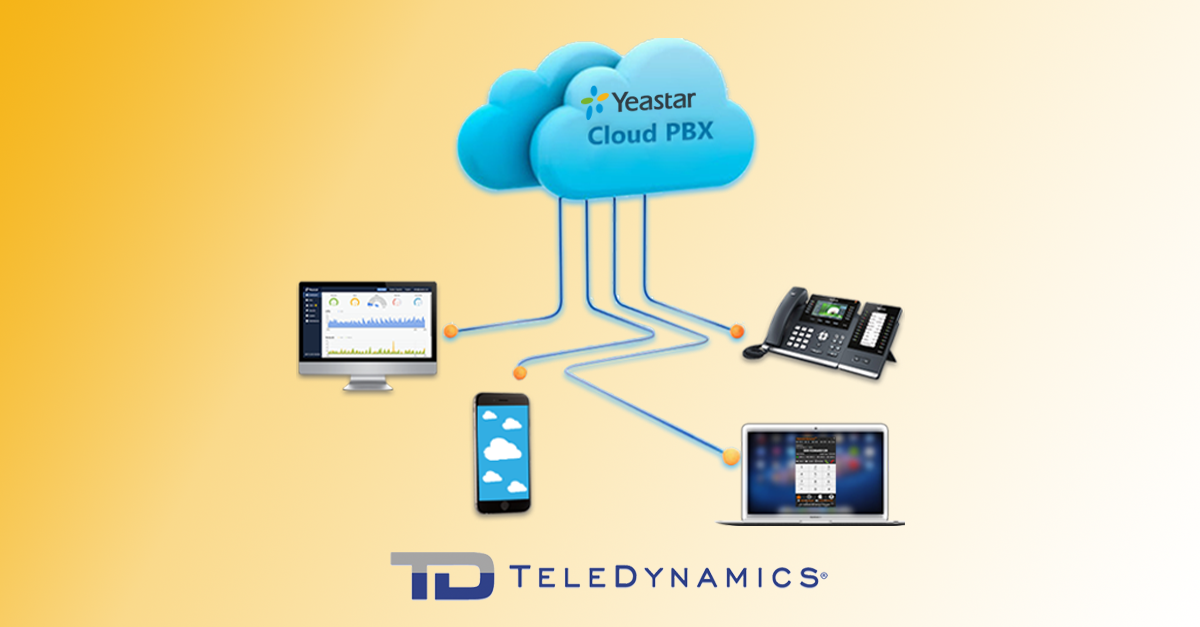Product Review
With Yeastar’s new P-Series PBX System, SMEs can experience value and possibilities that go beyond a traditional telephony system. In this article we take a deeper look at this offering from Yeastar, which was featured in the company’s 2021 kickoff virtual event on 28 January 2021.
Read More
Topics:
IP PBX,
Total Voice Solution,
Software Integration,
Mobility (including remote work),
Videoconferencing,
Productivity,
Product Review,
Yeastar,
Unified Communications
Now that working from home and dispersed workforces have become the new norm, connecting employees’ or company-issued smartphones to the enterprise IP PBX offers several advantages, including the ability to reach employees via their direct inward dial (DID) landline numbers, even though they are physically off-premise.
The technology that enables this is called VoIP over cellular data networks. In this article we detail how to enable it, the advantages of doing so and some potential issues to watch out for.
Read More
Topics:
OTT VOIP,
IP PBX,
Business Telephone System,
VoIP,
Mobility (including remote work),
Mobile,
Wi-Fi,
Unified Communications
When researching options for upgrading your telephony network or installing one from scratch, you may have come across FreeSWITCH. This is a freely available open-source application server for real-time voice communications of various types, including voice over IP (VoIP). In this article we examine FreeSWITCH to help you determine if it is right for you, and how it compares with Asterisk.
Read More
Topics:
IP PBX,
Business Telephone System,
VoIP,
Unified Communications,
Protocols & codecs
If you have been involved with telephony within the last decade, you will have heard of Asterisk as an open-source alternative to proprietary traditional and IP PBXs. If you’re considering Asterisk as a solution for your business, this article may be useful, as it will clarify what Asterisk is, how it can be implemented, and what kind of support you will need to ensure its viability as a solution.
Read More
Topics:
IP PBX,
VoIP,
Unified Communications,
Protocols & codecs
While working remotely has been on the rise for more than a decade, the trend accelerated geometrically amidst the COVID-19 pandemic. As a result, telecom vendors and service providers are scrambling to satisfy the increased demand for remote collaboration services.
Luckily, technology is also moving fast to keep up. In this article, we review a new connector available in Microsoft AppSource that allows all Yeastar IP PBXs to fully integrate with Microsoft Teams, the software giant’s unified collaboration platform. This allows communications between dispersed team members to be even more seamless and efficient.
Read More
Topics:
Customer Service,
IP PBX,
Business Telephone System,
Total Voice Solution,
Software Integration,
Productivity,
Yeastar,
Unified Communications
If you are a voice network engineer, then it has probably happened to you. Your SIP server is all set up and you have plugged in your IP phone. Its lights come on, its screen is activated, you see the loading icon rotating, and then… nothing. For some reason, the phone will not register.
IP phone registration issues are, unfortunately, not uncommon. In this article, we examine the most common causes of registration failures, and best practices for troubleshooting and resolving them.
Read More
Topics:
SIP Phones,
IP PBX,
Business Telephone System,
SIP,
Troubleshooting,
Firewall,
Protocols & codecs
If you’re looking to grow your business, consider serving micro-enterprises with 1-20 employees. According to the Census Bureau’s Annual Survey of Entrepreneurs, firms with between 1-20 employees made up 89% of all U.S. firms in 2016. While this has traditionally been an underserved market when it comes to VoIP telecommunications, more and more equipment manufacturers are offering products tailored to their needs. In this article, we review some cutting-edge devices that are ideal for micro-enterprises.
Read More
Topics:
Customer Service,
SIP Phones,
IP PBX,
Business Telephone System,
VoIP,
Grandstream,
Yealink,
Trends,
Mobility (including remote work),
Headsets,
Leasing,
Videoconferencing,
Conferencing,
Android,
Product Review,
Business Strategy,
Bluetooth,
Yeastar,
Avaya
Enterprises with multiple sites have a variety of options when it comes to their IP telephony infrastructure. Which setup will best meet their needs depends on the answers to questions such as:
- Where should the call processing take place?
- Where should calls to the PSTN exit the network?
- Where should incoming calls connect to the corporate network?
These decisions depend on the nature of the underlying network infrastructure that will carry the IP telephony services, as well as other considerations such as the location of the remote sites, the dial plan, and cost.
In this article, we discuss the centralized call processing model and how to avoid common complications with its deployment.
Read More
Topics:
IP PBX,
Business Telephone System,
VoIP,
Network Design,
Gateway
Article contributed by Yeastar*
Thought you knew Yeastar's Cloud PBX well? We are sure there are some useful features you have yet to discover. Below are 10 sweet features of the Yeastar Cloud PBX that might not be on your radar. Learn more about Yeastar's Cloud PBX (and stay for lunch) next July 24 in Austin, Texas. Dealers who attend are eligible for three months of Free Yeastar Cloud PBX! Click here to register.
Read More
Topics:
IP PBX,
Product Review,
Cloud,
Yeastar
By Dorothy Murach, Marketing Manager at Grandstream Networks*
The on-premise vs. hosted IP PBX battle continues. Which to choose? Each IP PBX option comes with its own characteristics and benefits, and the key is to determine which works best for your business’s unique needs. While it may seem that everything is moving to the cloud, hosted IP PBX options are not right for everyone. I’ll help you navigate through the details of each to see which IP PBX is the right choice for you.
Read More
Topics:
IP PBX,
Business Telephone System,
VoIP,
SIP,
Grandstream,
Cloud




.jpg)


.jpg)









